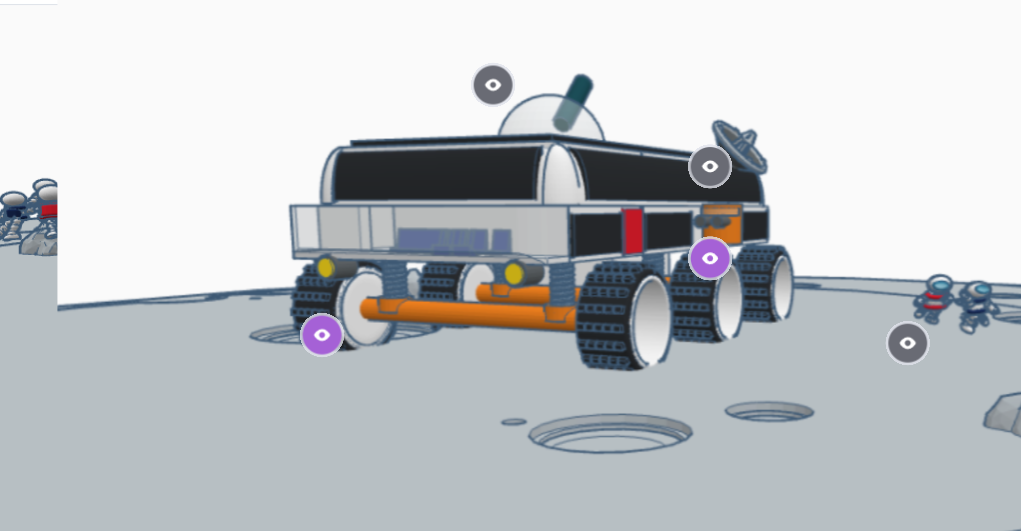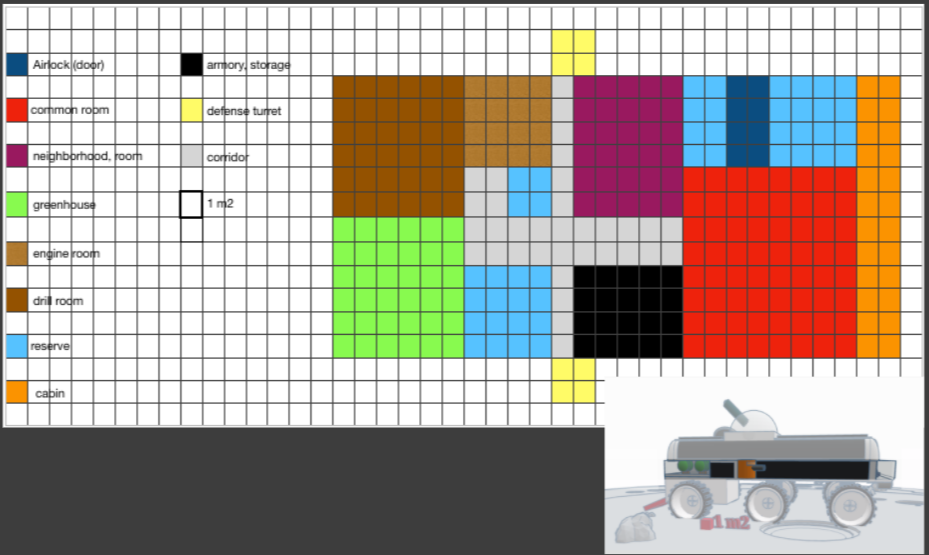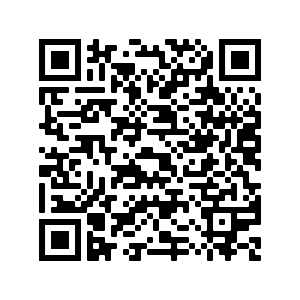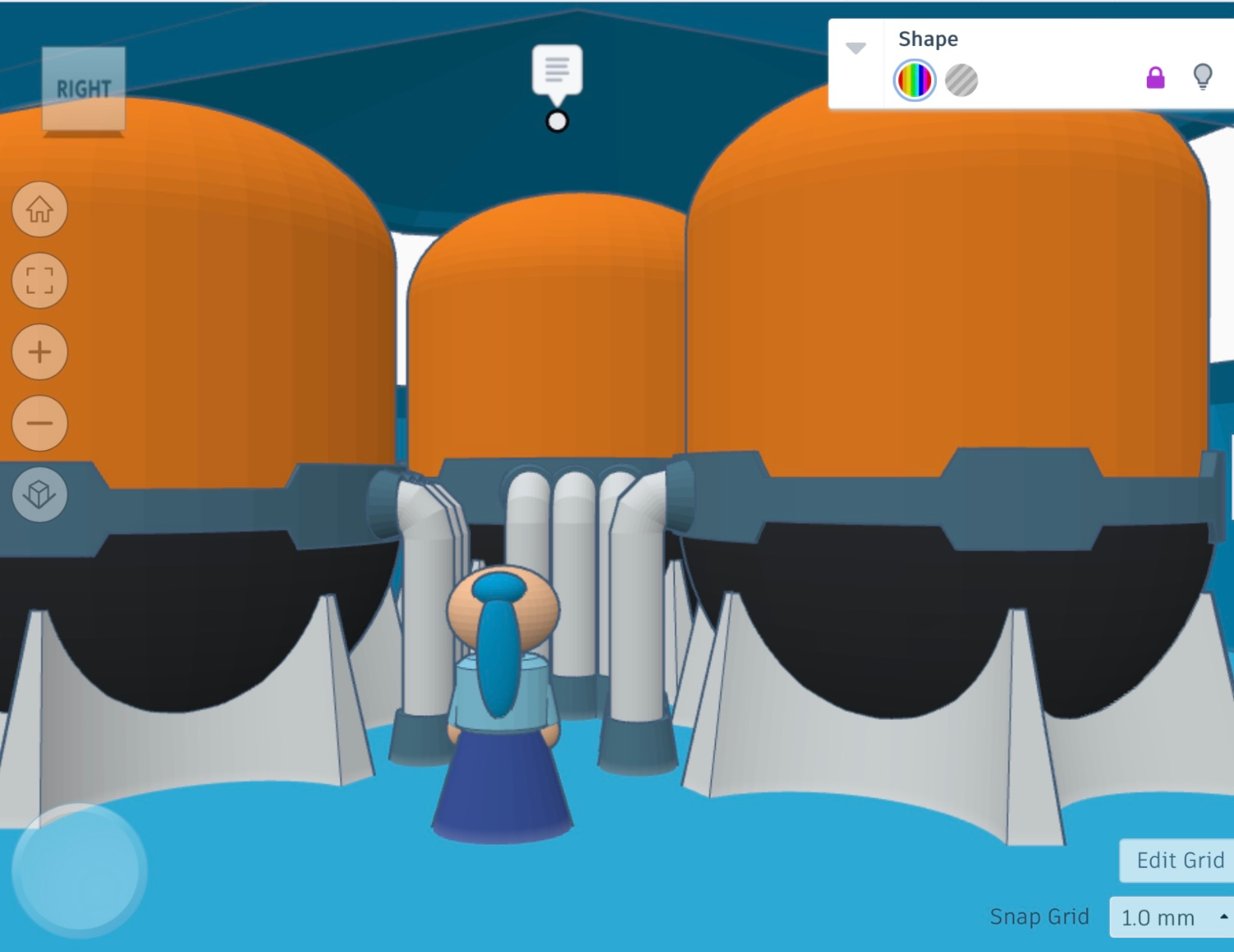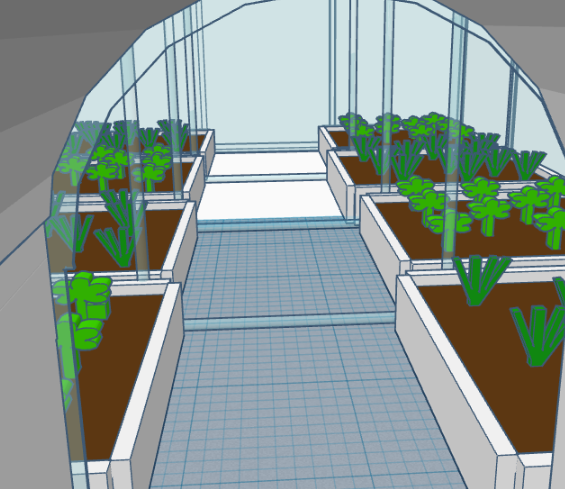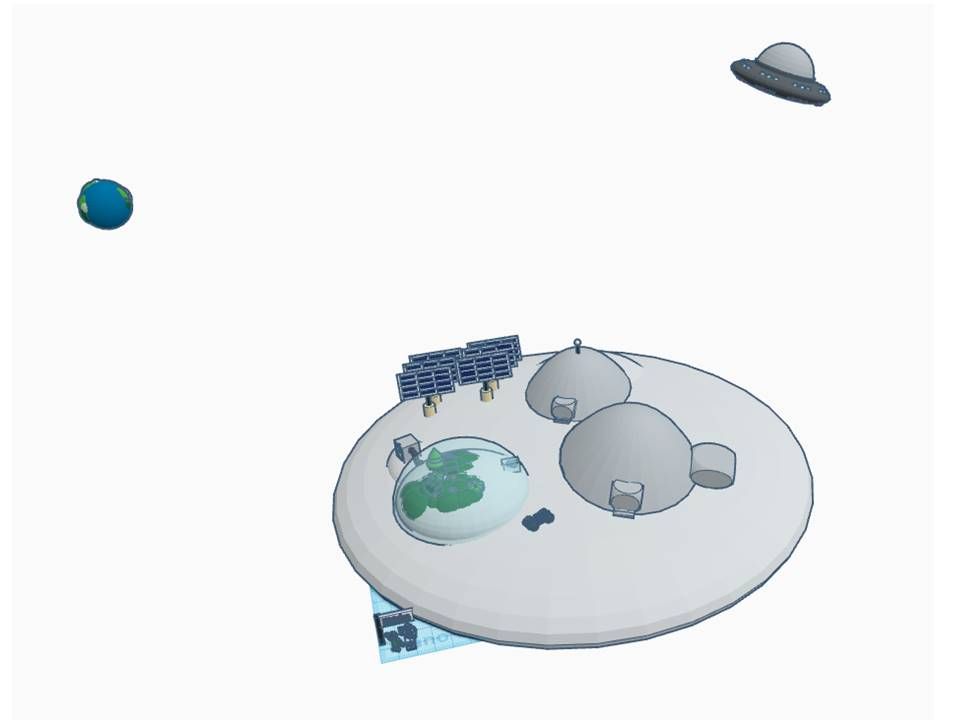Moon Camp Explorers Gallery 2021-2022
In Moon Camp Explorers each team’s mission is to 3D design a complete Moon Camp using Tinkercad. They also have to explain how they will use local resources, protect astronauts from the dangerous of space and describe the living and working facilities.
Team: 404_lino_luc_jules
college jean jaures colomiers France 13 3 /
External link for 3d
|
Project description
Our lunar base is mobile, has six wheels; it will therefore be in permanent motion and has two floors. Our base is also covered with solar panels and can accommodate 6 people. In her 656 m² there is:
|
||||
|
Where do you want to build your Moon Camp?
mobile Why did you choose this location?
Our lunar base is mobile and it therefore constantly moving. It travels on the surface of the moon and passes through the two lunar poles for to get water. How do you plan to build your Mooncamp? Which materials will you use?
We would consider building our lunar base with a 3d printer and robots for on-site assembly. We will import, from the Earth, some materials directly built and will mainly use polyethylene. We will also recover and recycle some materials and electronic components from the debris of artificial satellites, probes, lunar modules, in particular those from the Apollo missions between 1969 and 1972, and the remains of rockets like SpaceX’s falcon9, who is supposed to crash on the Moon at the beginning March 2022. |
||||
|
Water
|
Food
|
Electricity
|
Air
|
Protection
|
|
Water: drilling at the poles and water recycling. |
Food: greenhouse crops (our base is mobile so we can cultivate continuously), seaweed and chicken farming and some food imported from Earth (example: sugar, chocolate…). |
Energy: solar panels placed on the base and conversion of the energy of the wheels into electricity. |
Air: renewed thanks to the greenhouse plus hydrolysis. |
Protection: thickness of glass on the solar panels, observation of the lunar sky and defense turrets for to repel large meteors. |
|
Describe a day on the Moon for one of your Moon Camp astronauts
A lunar day at the M.C.E.: After 4 months the M.C.E. (Mobile Camp Explorer) has finally reached the lunar north pole to carry out its water reserves which will be used for the next 6 months. Our astronaut gets out of bed around 7:00 p.m. earthling and goes to the common room to have breakfast (bread made at the base, jam, fruit juice). Then, he goes upstairs for two hours of sport. Then he goes to check in the engine room (lubrication, oil change, control of the main organs, cleaning…) and see, in the common room, the advanced of certain experiments in progress. Then the whole team meets at 12:00 pm., inquires, informs the other members of the M.C.E. and eat (vegetables, fruits, chicken). Afterwards, he puts on his overalls and goes outside to see where the drilling site is to replenish the water. He communicates to his colleague to start drilling, then, after extracting the water, returns to the base. He then goes to the greenhouse to see the crops and livestock and brings the harvested food back to the reserves. Finally, after a busy day, the entire M.C.E. meets in the common room around 7:30 a.m., eats (pasta, cooked at the base, vegetables, seaweed) and discusses. Then our astronaut will shower, and finally, go to bed. |
||||


